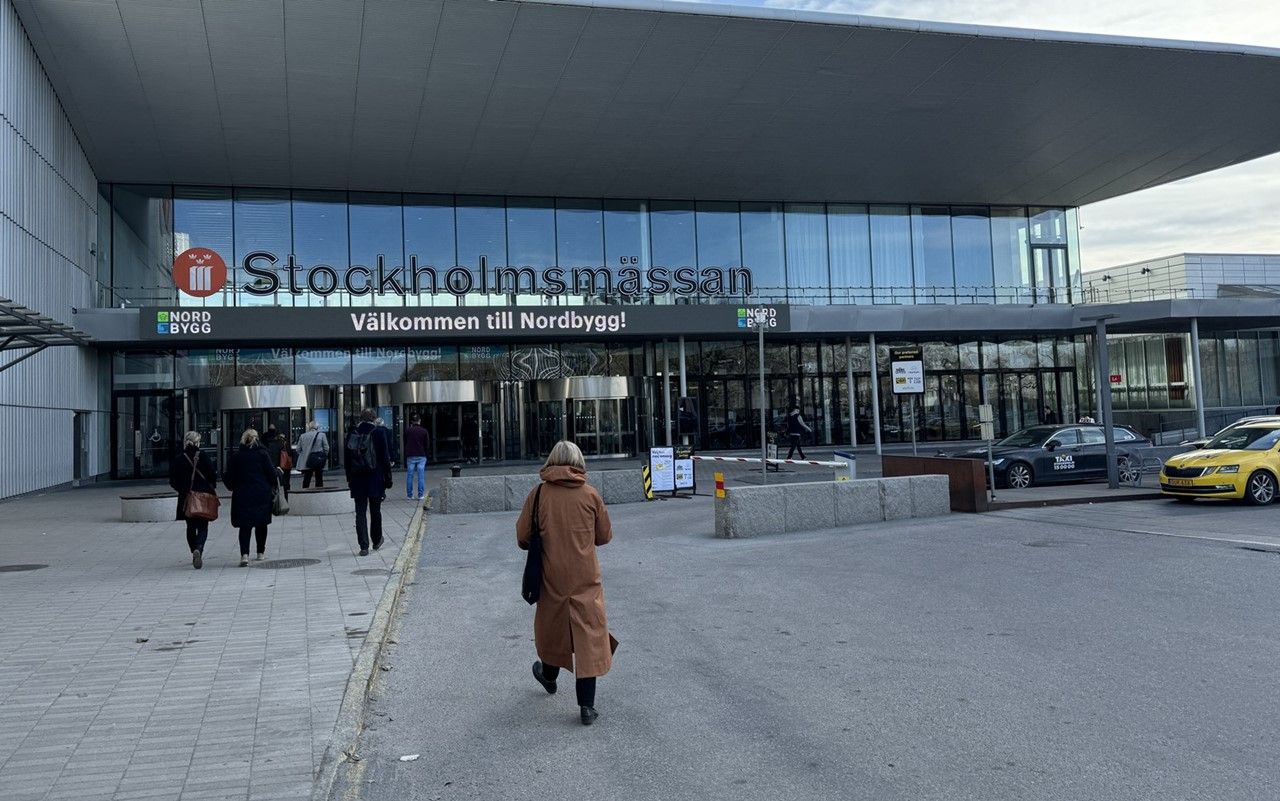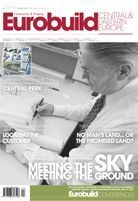Locating the customer
New technologies
You enter a hotel and you are welcomed by a receptionist who knows your name and says that your room, on the top floor, facing west, just as you like it, is waiting for you. The door opens automatically when you stand in front of it. Inside there is a mini bar containing all your favourite snacks while the bed has two smaller quilts instead of one large one – as you prefer. After a foam bath you go downstairs to the hotel bar, where a barmaid serves your favourite cocktail without a word. And without mint, which you are allergic to. Are these the privileges of a regular client of a five-star hotel? Not necessarily. You could be in this hotel for the very first time. And it does not have to be very luxurious. But only if the hotel has invested in the required tech.
Not just towels anymore
Hoteliers usually associate RFID (radio-frequency identification) chips with the management of a hotel’s laundry items. The largest chains have not only been putting elegant logos on them but also small radio transmitter tags, which make it possible to monitor which items came back from the laundry and which did not, thus eliminating the need for a manual inventory. The tags can even discreetly signal that a hotel dressing gown has somehow ‘got lost’ in the suitcase of a guest who is just checking out. However, savings are not the only argument in support of the use of RFID in hotels. Swiss company OneLab Solutions has patented key fobs for hotels with a built in RFID chip to allow staff to immediately identify the guests approaching service points. These, when combined with access to their previous stay history, help to personalise the service, resulting in a more satisfied client. Using the same system and analytical tools hoteliers can prepare a better offer, get more accurate statistics and optimise hotel operations costs. RFID is equally useful for fairs and conference organisers for identifying the inflow of participants. Cleaning and the security services are also no strangers to this system, using it for monitoring the location of their staff.
The holy grail of marketing
The usefulness of technological localisation was recognised by international hotel chains some time ago. Many now allow guests to find their accommodation using car navigation. Swissôtel uses GPS in its mobile applications to help guests find local tourist attractions and restaurants, removing the need for looking into a guidebook or asking the receptionist for advice. Others use GPS to follow hotel limousines in real time, e.g. to best prepare for the welcoming of VIPs. GPS gets even more useful when combined with much more precise micro-localisation. Its success is down to the increasingly common use of beacons. The relatively inexpensive sensors send a fixed radio signal that is recognised by mobile devices within their reach (of a maximum of several dozen metres). If the owners of a mobile device wish, relevant digital content can be displayed. This mostly includes notifications about a given location or the services offered nearby. The possibilities of beacon installations is huge, but it is only just now that they are crystallising. “While the retail, transportation and sports sectors have been using beacons to direct fans, navigate and improve traffic patterns for travellers and deliver special offers with product ratings and comparative pricing for shoppers, the hotel sector now has the ability to personalise and deliver a richer guest experience with real-time promotions,” says Anthony Zebrowski-Rubin, the CEO of GuestDriven, which develops software for increasing guest engagement with mobile devices.
Context is king
“They drive new revenue and engagement, deepen customer loyalty and elevate their brand,” he adds. So it is not surprising that beacons are starting to win the hearts of hotel marketers. Last year Marriott launched the Marriott Rewards’ LocalPerks micro-localisation system. The tool, which is integrated with the hotel chain’s loyalty programme, sends discount offers to guests via beacons in precise locations within the hotel complex. So it is no longer necessary to advertise a promotion in the hotel restaurant, spa or golf course on a gaudy advertising banner, or through wrongly addressed text messages or pushy leaflets. However, experts stress that the key to success here is the context and the accuracy of the information sent. This also involves knowledge about the client. An analytical tool by Adobe, Marketing Cloud, uses GPS as well as beacons to monitor the traffic patterns and customer engagements in such properties as hotels, museums and sports stadiums. Hoteliers can analyse the duration of clients’ stays in a given place and their interactions with the notifications sent by the beacons. Starwood is one of the companies that have already decided to use the software.
Evacuation procedure
Instant drawing of visitors’ attention to a specific place or stimulus works well not only for increasing sales but it can literally save lives. “If there is something wrong going on, the beacon micro-location system can show people the exits as well as distribute the crowd in the right way,” explains Adam Jesionkiewicz, co-founder and president of Polish company Ifinity, which specialises in the development of micro-localisation systems for all kinds of facilities. “Research shows that in cases like panic in stadiums people stop paying attention to the communication and architecture around them and they grab their phone. The system can also be used the opposite way: when an office building is on fire rescue teams can see where people are and they can tag themselves and be visible in the system,’ explains Adam Jesionkiewicz. His company is currently working on a Dubai skyscraper and it is in negotiations with a number of developers in Poland. It also wants to use beacon systems as a tool used to direct the traffic in car parks. A car would be directed to the first available parking space or the most convenient parking space relevant to the business the driver comes with. “As far as the world of hotels is concerned, the micro-localisation process will start from services with a great deal of added value, such as those for VIPs. At the beginning they will be pilot programmes, such as loyalty clubs, and it will go on from there,” remarks Adam Jesionkiewicz.
Rubens on the wall, knowledge on the screen
Polish beacon manufacturer Estimote also sees beacons as a valuable marketing tool. Last year, Estimote sensors were installed in the Rubens museum in Antwerp, where a Belgian interactive agency used them for a mobile multimedia guide application for the building. The beacons communicate with the smartphones of visitors to the museum starting from the yard, where the application can be opened (with the user’s consent) before the building has even been entered. This way visitors are able to follow the external architectural changes the historic building has undergone over the years. Inside the building the beacons monitor the distance between the visitor and certain walls and exhibits while automatically launching other functionalities and contents corresponding to the exact place the visitor is currently in. A similar system has also been introduced in the Neon Museum in Warsaw. The usefulness of such solutions has also caught the attention of Warsaw itself. As part of the ‘Virtual Warsaw’ programme, the city has carried out two pilot programmes using beacons and the micro-localisation technology developed by Ifinity to navigate people in selected public buildings as well as on public buses (the entire 185 line) and at bus stops. The beacon infrastructure, initally addressed to the needs of the disabled, will eventually serve all the residents of the capital city as well as tourists. “We are building a comprehensive infrastructure model for the city’s potential that will be available to the public. Everyone will be able to use the beacon signal,” reveals Tomasz Pactwa, the director of the public aid and projects department of Warsaw city council. Recently Warsaw commissioned another pilot programme, covering almost the entire Powiśle area including the Copernicus Science Centre underground station, the local public transport as well as nearby streets. In the future, under the fourth pilot programme, beacons will be used inside the Copernicus Science Centre, for both the exhibits and the conference centre.
Warsaw beacon dream
The pilot programmes are the launch pad for a much bigger and wider navigation and information scheme. Estimated at PLN 54 mln, the project should be fully rolled out by the end of 2019. “By 2017 we are planning to have implemented half of the project and in 2018 it will be rolled out across the whole of Warsaw. In 2019 it should cover the entire conurbation and satellite towns for all the intended services, such as public transport and the public services in buildings and all the other public places visited by residents,” says Tomasz Pactwa. The city is being advised by international experts on the development of the programme. The Warsaw beacons will be integrated with the GPS system and work independently only when micro-navigation is necessary, namely upon entering a building or at bus stops. So far the projects carried out and planned by the city do not envisage sending out any advertising content. “We are also testing various functionalities and amenities that are being discovered during the pilot programmes, for example, obtaining a queue number via a mobile application so that people do not have to queue,” explains Tomasz Pactwa. The city is also planning to implement a parking system based on beacons that would automatically charge the parking fees. Interestingly, one of the programme modules involves training sessions for small and medium-sized enterprises as well as for students in devising methods for creating applications and technological systems using the city’s beacon signal. Also, universities have now become interested in cooperating with the city. “This is our only chance in history when we can be the first to implement something, we can create the culture of functioning within this system, which is why we are trying to approach it very comprehensively. In the future there will be more devices that can be used as beacons that will make micro-navigation more precise,” concludes Tomasz Pactwa.
New thing
His opinion is shared by the majority of market observers: the near future will be connected device-oriented. In line with the concept of the ‘internet of things’, more and more objects, including public utility or home-use ones, will be connected to the internet so they will be able to collect data and communicate with each other. This will surely raise the bar for an even more personalised hotel service and might also help to save money in the process. ‘Intelligent’ fridges that replenish food by placing orders on the internet or hotel rooms that automatically activate the thermostat when a guest arrives in the lobby are no longer science fiction. “Hotel checking-in will be completely automated in the future, it will not require any registration, kiosks or a reception. The system will simply register that a guest has entered the place, it will display a welcome message and it will automatically direct the guests to the room and open the door for them. Even a phone will not be needed, everything will operate automatically,” argues Adam Jesionkiewicz. According to research carried out by Gartner, by 2020 the suppliers of internet products and services could be raking in at least USD 300 bln. However, before that happens much still needs to be done in the hospitality sector, regardless of the standard offered. For example, the installation of decent and free of charge Wi-Fi networks.





















































